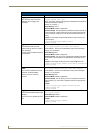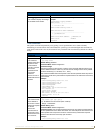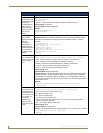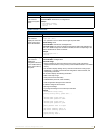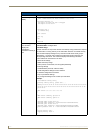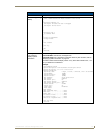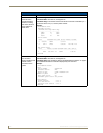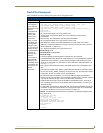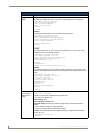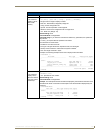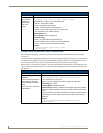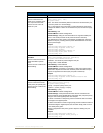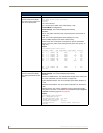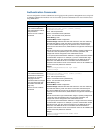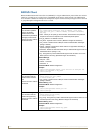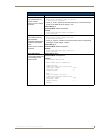
CLI (Command Line Interface)
194
NXA-ENET24 - Software Management Guide
Flash/File Commands (Cont.)
Command Function
copy
(Cont.)
Example:
The following example shows how to copy the running configuration to a startup file:
Console#copy running-config file
destination file name: startup
Write to FLASH Programming.
\Write to FLASH finish.
Success.
Console#
Example:
The following example shows how to download a configuration file:
Console#copy tftp startup-config
TFTP server ip address: 10.1.0.99
Source configuration file name: startup.01
Startup configuration file name [startup]:
Write to FLASH Programming.
\Write to FLASH finish.
Success.
Console#
Example:
This example shows how to copy a secure-site certificate from an TFTP server. It then
reboots the switch to activate the certificate:
Console#copy tftp https-certificate
TFTP server ip address: 10.1.0.19
Source certificate file name: SS-certificate
Source private file name: SS-private
Private password: ********
Success.
Console#reload
System will be restarted, continue <y/n>? y
Example:
This example shows how to copy a public-key used by SSH from an TFTP server. Note
that public key authentication via SSH is only supported for users configured locally on the
switch:
Console#copy tftp public-key
TFTP server IP address: 192.168.1.19
Choose public key type:
1. RSA: 2. DSA: <1-2>: 1
Source file name: steve.pub
Username: steve
TFTP Download
Success.
Write to FLASH Programming.
Success.
Console#
delete
This command
deletes a file or
image.
Syntax:
delete [unit:] filename
• filename - Name of the configuration file or image name.
• unit - Stack unit. (Range: 1-8)
Default Setting: None
Command Mode: Privileged Exec
Command Usage: If the file type is used for system startup, then this file cannot be
deleted.
• “Factory_Default_Config.cfg” cannot be deleted.
• A colon (:) is required after the specified unit number.
Example: This example shows how to delete the test2.cfg configuration file from flash
memory for unit 1:
Console#delete 1:test2.cfg
Console#



